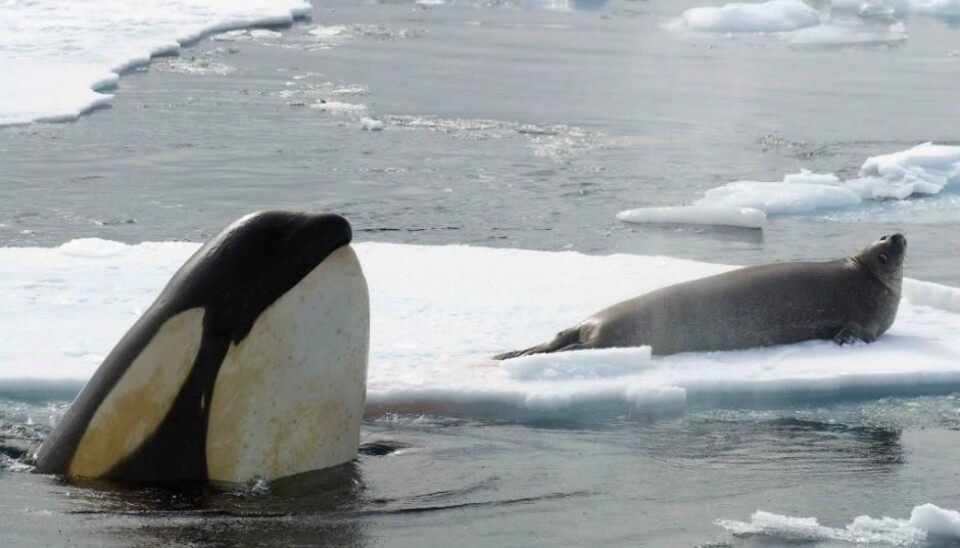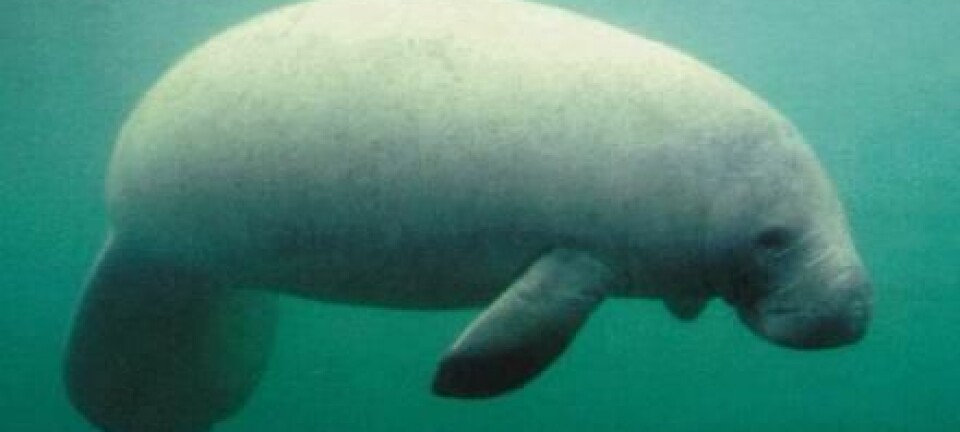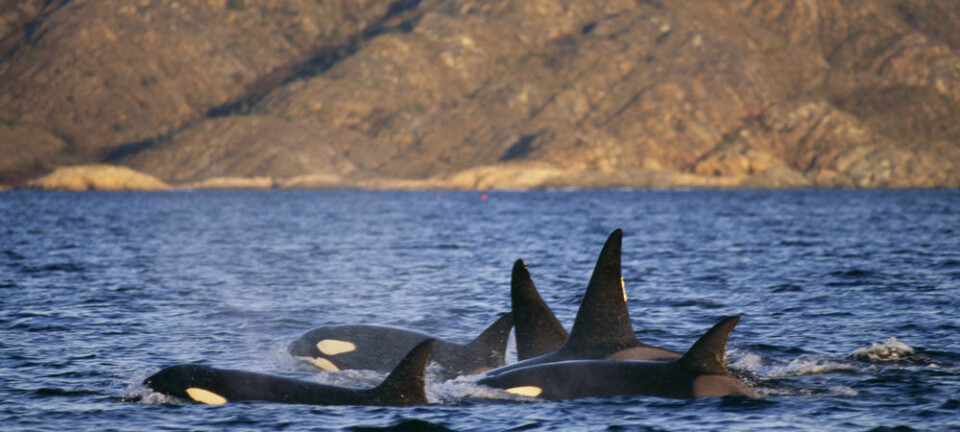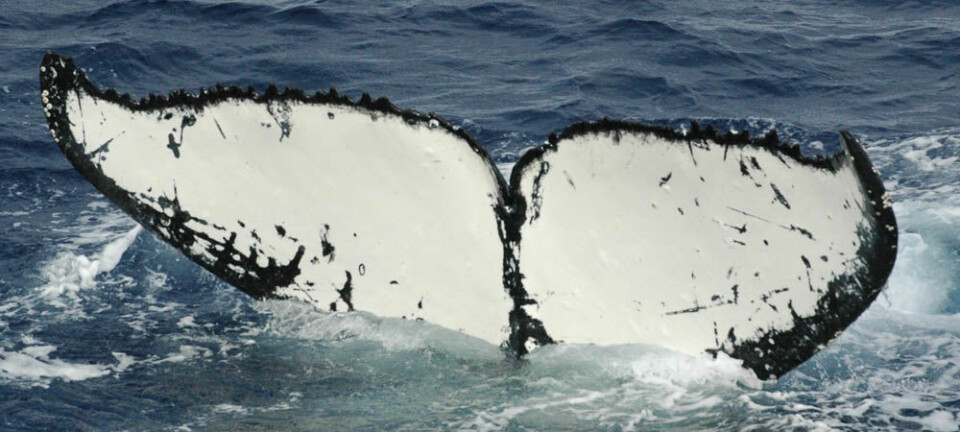
Culture is a strong evolutionary drive among killer whales
New study provides insights of killer whale behaviour and the evolutionary interplay between genes, environment, and culture.
Killer whales share many broad similarities with humans--both species are highly intelligent social animals with long life spans, and both exhibit tribal behaviour. They are also great hunters who, like humans, hand down their skills from one generation to the next.
Such behaviour can be classified as ‘culture’ and while biologists have recognised this in other species, such as Chimpanzees, an international team of scientists have now shown that killer whale culture has also been a powerful force in their evolutionary development.
"By developing new behavioural traits they [killer whales] have been able to colonise a wide range of new habitats," says lead-author Andrew Foote from Uppsala University, Sweden. “When the culture develops there is an opportunity for genetic alterations to become permanent, and we can see this selection occur.”
Killer whale culture develops new behavioural traits
Our own culture has helped us to adapt to a number of evolutionary selection pressures--from hot deserts to the cold Arctic. And the same is true of killer whales. By developing new behavioural traits, they have been able to occupy a range of ecological niches, such as penguin hunters in the Southern Ocean and fish eaters in the Pacific Ocean.
The scientists behind the new research suggest that killer whales may parallel our own evolutionary development.
"Killer whales provide us with a model to see how behaviour can very quickly drive new speciation when you have a lot of species in close proximity" says co-author Tom Gilbert from the Centre for Geogenetics, University of Copenhagen, Denmark.
"Something similar may have happened in human evolution in the past, where many different types of people lived together. Their behaviour may have been critical to differentiate between the groups," he says.
The study was recently published in Nature Communications.
Killer whales live in separate cultural groups
Foote and an international team of scientists mapped the genome of killer whales from five distinct cultural groups who hunt completely different prey and in very different ways.
Some are specialised in driving fish together, others leap onto land or ice to catch sea lions and seals. Others team up to knock seals off sea ice, or take turns chasing penguins to the point of exhaustion.
All have highly specialised life styles that they pass down to the next generation. And the different cultural groups do not pair up--they actually go out of their way to avoid meeting one another.
It is as though they see other groups of killer whales as something totally separate to themselves. Their identity it seems, is defined by who the whales associate with and the activities that they participate in--much like us humans.
This is why Foote and his colleagues wanted to find out just how genetically distinct these groups are.
Isolated groups with a common ancestor
The scientists have sequenced the genomes of 48 killer whales from three groups in the Southern Ocean around Antarctica and two groups from the North Pacific.
Each of the five groups was represented by around 10 killer whales, and each group is known to be culturally distinct.
“We find that they are actually really isolated,” says Gilbert.
The analysis showed that the whales’ last common ancestor lived around 227,000 to 126,000 years ago.
A family history of bottlenecks
The genomes reveal very little genetic variation within a group but quite a large variation between the groups. The results indicate that the killer whales have experienced five bottlenecks in their evolutionary history.
A bottleneck indicates that each of the five groups are descended from a just few individuals that were isolated and subsequently flourished.
“We also see it in people," says Foote. "There’s been a bottleneck when modern humans left Africa, so today there is much greater genetic diversity among humans in Africa than among people in Europe and Asia, for example.”
Behaviour opens up ecological niches and gene selection
The scientists speculate that certain killer whales developed new hunting behaviours that opened the door to new habitats.
The few whales who successfully separated from the rest of the group then learned these new methods and passed them on to their descendants.
When the scientists studied the animals’ genomes they could clearly see evidence of this process over time.
They saw strong evidence of selection in the genes that control behaviour and diet, reflecting a shift to a new food source.
Whales in both the Pacific and Antarctica have a strong selection of several genes involved in methionine metabolism, which is probably due to the availability of seals and sea lions that contain large amounts of the essential amino acid methionine.
Killer whale evolution similar to humans
The complex interactions between environment, culture, and genes, is similar to our own genetic history of bottlenecks and expansion, along with the development of new behavioural traits that have opened up new ecological niches and in turn led to genetic adaptation and selection.
"One of the things that we’ve only learned recently is that there are many more extinct types of humans [than previously thought], for example the Denisovans. It’s likely that we will find even more human groups because cultural behaviour is such a strong force that it can drive speciation very quickly," says Gilbert.
The interaction between culture and genes has up until now, almost exclusively been studied in humans. But now might be the time to extend it to other social animals, suggest Foote and the other scientists behind the new study.
----------------
Read the Danish version of this story on Videnskab.dk
Translated by: Catherine Jex









